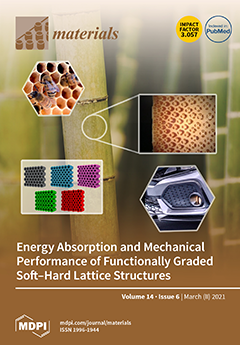In this paper, the influences of Cr
3C
2/VC content on WC grain size, WC grain shape and mechanical properties of WC–6 wt. % Co cemented carbides were investigated. The results showed that the grain size first rapidly decreased and then slightly decreased with the increasing Cr
3C
2/VC content, and VC led to finer grain size and narrower size distribution. HRTEM/EDS analysis of the WC/Co interface indicates that the segregation concentration of V is much larger than that of Cr, which may be a strong response to the higher inhibition efficiency of VC. The addition of Cr
3C
2 induced triangular prism shape WC grains while VC generated stepped triangular prism grains. Despite the grain growth inhibitor (GGI) mechanisms of Cr
3C
2/VC have been extensively studied in the literature, the doping amount, especially the doping limit, has not been systematically investigated. In this work, the saturated solubilities of Cr and V in cobalt binder phase along with carbon content hare been predicted based on thermodynamic calculations. Based on the theoretical calculations, the doping amount of Cr
3C
2/VC is designed to be gradually increasing until more or less over their maximum solubilities in the binder phase, thereby investigating the subsequent microstructure and mechanical properties. When the doping of Cr
3C
2/VC exceeds the maximum solubility in Co phase, Co-rich Cr-carbides and Co-deficient V-carbides would form respectively, which were detrimental to the transverse rupture strength (TRS) and impact toughness. The hardness increased with the increasing Cr
3C
2/VC content, while the fracture toughness decreased with the increasing Cr
3C
2/VC content. The TRS initially enhanced and then declined, but the stepped triangular prism shape grains and low fraction of WC/Co interface in WC–6Co–VC cemented carbide led to a more pronounced decline in the TRS. The sample with 0.6 wt. % Cr
3C
2 addition had good comprehensive mechanical properties, its hardness, fracture toughness and TRS were 1880 kg/mm
2, 9.32 MPa·m
1/2 and 3450 MPa, respectively.
Full article






